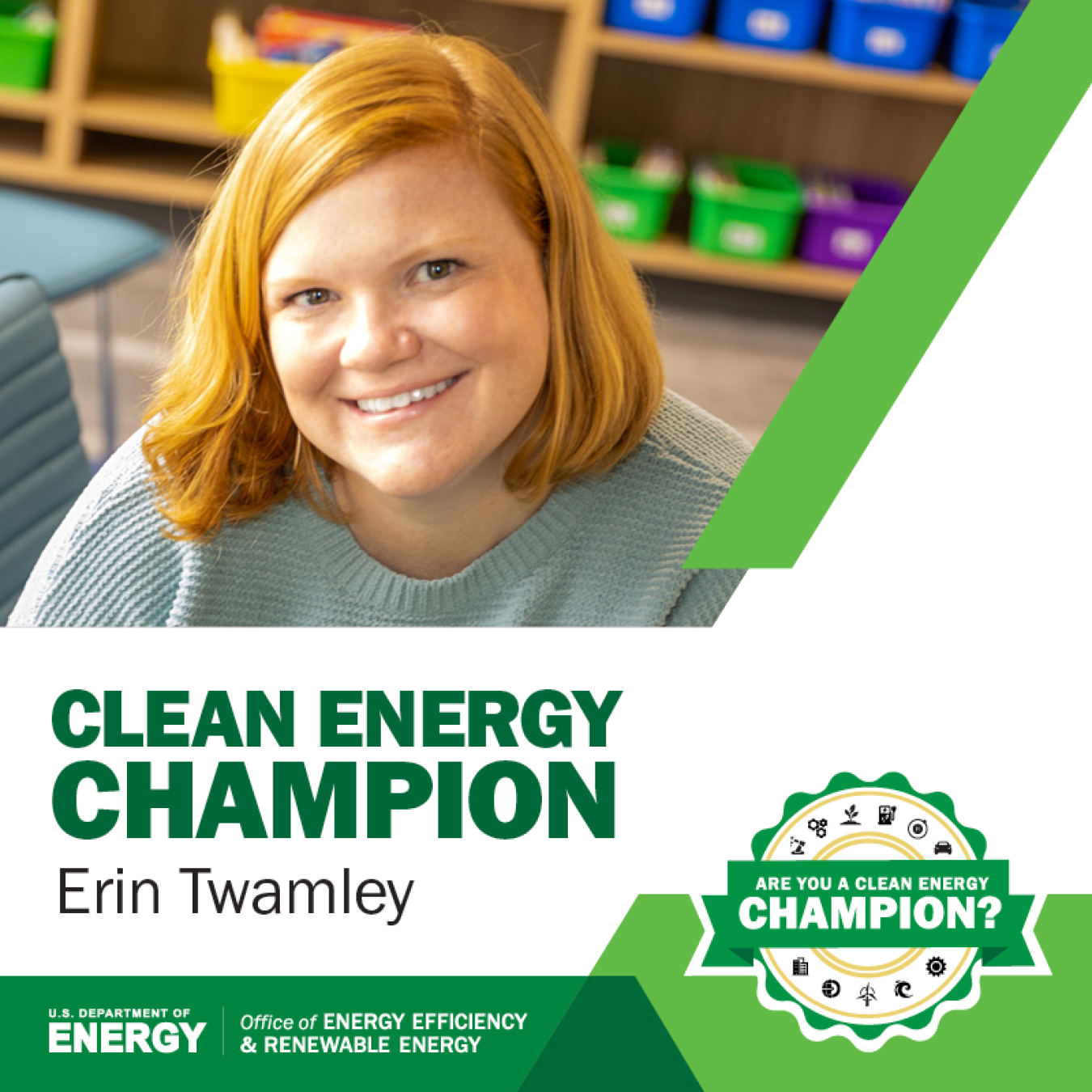Inspiring children to ask questions about energy is a big part of Erin Twamley’s job. Find out how the educator and author is exposing young kids to the many opportunities of a clean energy future.
Office of Energy Efficiency & Renewable Energy
July 20, 2022This is twelfth in a series of stories about Clean Energy Champions—real people who are taking action to support or join the transition to a clean energy economy. Their stories illustrate the many ways you, too, can become a Clean Energy Champion.

Sparking interest in the future clean energy workforce starts with elementary school kids, says researcher and educator Erin Twamley. Energy is not commonly part of the science, technology, engineering, or math (STEM) curricula in classrooms, and Twamley believes classrooms should foster a sense of wonder and curiosity about how we power our planet. One way to achieve this is by telling stories about energy and the people in energy careers, and Twamley has been telling those stories.
In 2012, Twamley joined DOE’s Office of Energy Efficiency and Renewable Energy (EERE) as a contractor to help manage energy literacy efforts. At EERE, her work supported teachers’ and students’ energy literacy: understanding the nature and role of energy so they could make more informed decisions. She helped link workforce development initiatives with K-12 education efforts. Through her work, she saw how the struggles to diversify the clean energy workforce manifested, from participation rates in the workforce to recruitment and outreach efforts often focused on college students.
Recognizing that the best way to increase diversity in clean energy is to share stories about it, she left EERE to write and teach. Today she is an award-winning author of seven children’s books about diverse women with STEM careers who are working to build a sustainable planet. Her books share role models with kids to help them understand that they can be problem solvers. For example, as problem solvers, they can get a job figuring out the best material to use to make a wind turbine blade or installing solar panels on airports.
Clean En∙er∙gy Cham∙pi∙on
/klēn/ /ˈenərjē/ /ˈCHampēən/
noun
1. A person or group that takes action to support or join the transition to a renewable energy economy, with the knowledge that reducing carbon emissions provides daily benefits to every American so they can live happy and healthy lives.
In her books and in the classroom, Twamley uses specific industry terms rather than broad characterizations, like “scientist or engineer.” “If we don’t use terms like ‘solar installer,’ ‘wind technician,’ or ‘reliability engineer,’ how are kids supposed to know these careers and opportunities exist?” she says. “We underestimate the curiosity of youth. Youth can consume and learn way more than we allow them to. Ask any four-year-old to name a dinosaur, and I can guarantee that they’re using the full scientific name of that dinosaur.” These same kids can learn about hydrogen, biofuels, and renewable energy farms.
She writes to inspire kids to ask questions like: How do we capture methane, a greenhouse gas that we can’t see or smell? How does corn make a car drive? At the same time, she points out, the caregivers who read with the children might learn the answers, too, and better understand the role of energy in their lives. “We have to understand how we use energy, where electricity comes from, and think about where we want it [electricity] to come from,” Twamley says. Many of these energy decisions have been made for us, based on an economic system. These energy choices are causing climate change, and many energy consumers want to make a difference.
Twamley writes stories that go beyond the science of how energy works so her readers feel connected. She is encouraged by auto manufacturing companies making some of the most popular pickup trucks electric and home goods company IKEA preparing to sell solar panels in California. Visibility of energy and the people in energy fields helps normalize the use and importance of clean energy.
As more clean energy comes online in the United States, Twamley will continue sharing stories of women in STEM and energy to show kids of all backgrounds and their caregivers that they can be part of the clean energy future. “I truly believe if you give people the opportunity to see themselves in clean energy, this will help them soar,” she says.


